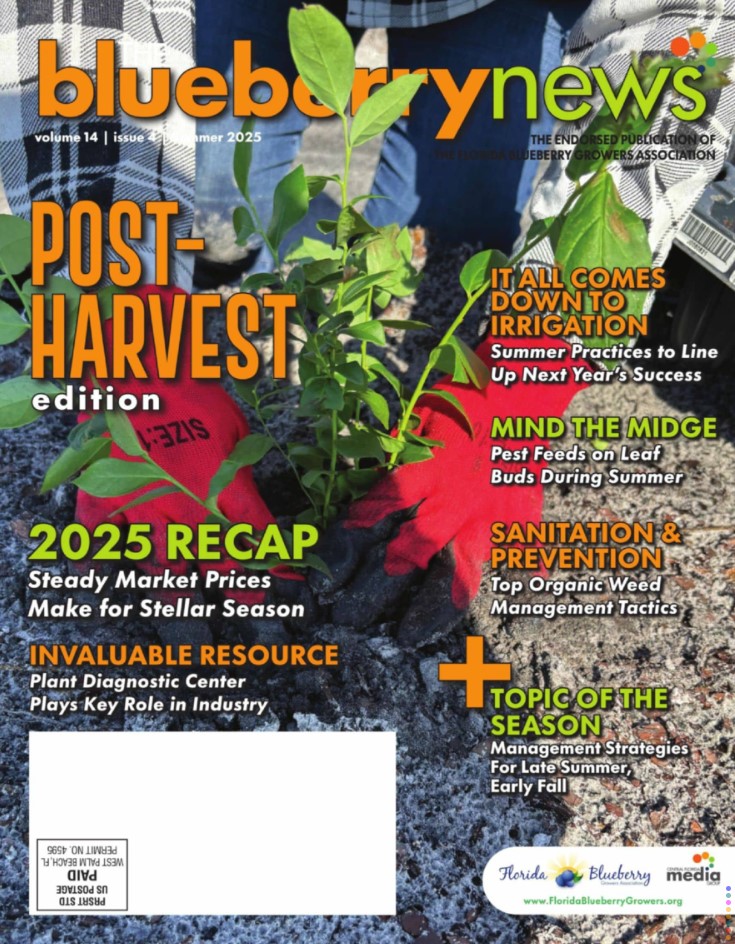Weather Pattern Can Affect Nutrient Management and Fungal Disease
We spent the past three winters in a La Niña pattern, which favors warm and dry weather in Florida. This year, a mature and strong El Niño pattern is present in the tropical Pacific Ocean and is expected to continue during the winter and spring seasons. The El Niño–Southern Oscillation, or ENSO, is the interannual fluctuation of the atmosphere–ocean system in the equatorial Pacific and it has three phases: warm phase (El Niño), cold phase (La Niña), and Neutral.
During El Niño events, unusually warm water appears in the eastern Pacific Ocean off the coasts of Peru and Ecuador. Because the warm current usually appears around Christmas time, the fishermen named it El Niño, Spanish for “the Christ Child.” During La Niña, Spanish for “little girl,” unusually cold water is present in these locations, causing contrasting shifts in local weather patterns as well as in the global climate.
El Niño events normally bring cooler and wetter winter and springs to the Southeastern US. El Niño causes the Pacific jet stream current to dip into the Southeast providing cold fronts with more moisture and energy. El Nino typically leads to 40% to 50% more rainfall than normal for the Florida peninsula. More information about ENSO impacts can be found at: http://agroclimate.org/wp-content/uploads/2016/03/ENSO-Climate-southeast.pdf.
Typical precipitation anomalies during El Niño years by climate division. Typically, the peninsula of Florida receives 2-4 inches of rainfall above the long-term average for the winter.
Typical monthly precipitation and deviations from long-term averages for Alachua County, Florida during El Niño years, showing positive anomalies during the winter months. You can check the typical rainfall patterns during ENSO phases using the AgroClimate ENSO tool: http://agroclimate.org/tools-old/weather-stations/
Typical El Niño weather patterns may affect crops in different ways. Nutrient management can be affected by the increased frequency of leaching rainfall events, causing nutrients, mainly nitrogen, to be washed out of the root zone, especially in fields irrigated by seepage irrigation. Cooler rainy conditions combined with lower levels of solar radiation resulting from cloudy conditions may slow crop development rates and growth. Additionally, conditions may favor the development of fungal diseases such as anthracnose fruit rot and Botrytis blossom blight. Most soil-borne pathogens and fruit quality problems also tend to increase in El Niño years.
With respect to temperatures, historical records have shown that El Niños tend to be cooler for Florida, most probably because of increased cloudiness. However, this has not been the case in recent years. While El Niño events prior to 1990 were cooler than the 20th-century average, recent El Niño events have been warmer than average, including the 2015-16 winter when lower chill accumulation was observed across most of Florida.
Chill hours (32°F - 45°F) accumulated yearly in Alachua County from October 1 through February 28. Only 256 chill hours were accumulated in 2015-16, a strong El Niño event.
CREDIT:
DR. CLYDE FRAISSE, Agricultural and Biological Engineering, UF/IFAS





